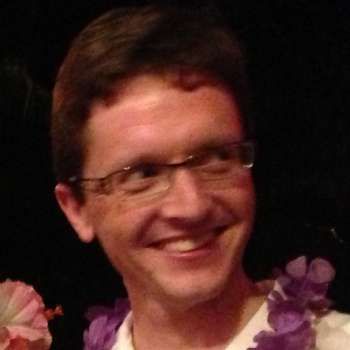Just 13 years shy of its 200th anniversary, La Juive has now finally been seen on the Australian stage. Easily the biggest success in the career of the now-little-known Fromental Halévy, La Juive exemplifies all that is best and worst of French 19th-century grands opéras. On the one hand, it offers the audience spectacle, grandeur and plenty of attractive melodies. On the other, there are strained plot twists and melodramatic excesses aplenty over the course of its five long acts.
In Olivier Py’s production, revived for Opera Australia by director Constantine Costi, substantial cuts reduced the running time to a little under three hours, and the costumes were updated from the 15th to the 20th century. Perhaps inevitably, the clash between Christians and Jews was reframed in terms of modern jingoistic anti-Semitism, with the chorus bearing banners proclaiming “A mort les étrangères” (Death to foreigners) and the like. The parallels with the holocaust were particularly clear in Act 5, which opened with the dropping of numerous pairs of shoes from the flies, and the sight of Jews discarding their belongings and processing off stage (by implication, to the gas chambers).
Staging was crucial to the effect of grand opéra (not without justice has it frequently been compared to cinema) and the fluid set design of Pierre-André Weitz allowed smooth transitions between a variety of different locales, from a book-lined interior of Eléazar’s Passover room to the public spaces outside. On the back wall, silhouettes of leafless tree trunks slowly panned across, until they froze in the final act. The lighting design of Bertrand Killy was particularly effective: changing colours shaped the emotional atmosphere of the different scenes and Eléazar’s great Act 4 air “Rachel, quand du seigneur” was sung on a darkened stage with only a spotlight on him, highlighting the battle between vengeful thoughts and paternal feelings going on in his mind.
The title role was sung with passion by Natalie Aroyan, who captured with aplomb the hugely varied moods of besotted paramour, betrayed avenger, self-sacrificing lover and finally defiant martyr. Diego Torre was his stalwart self in the crucial role of her father, Eléazar. Although his manneristic use of appoggiaturas tended to grate after a while, one could not fault his full-voiced commitment to every note. “Rachel, quand du seigneur” was greeted with the biggest ovation of the night.
Making her debut as principal for Opera Australia, Esther Song as Princess Eudoxie wooed both the audience and her errant spouse with fluent coloratura and a warm tone. As her two-timing husband Prince Léopold, Francisco Brito showed off his agile light tenor, capable of reaching (and sustaining) a high D, even if in the ensembles he did not quite have the heft of Torre’s voice. David Parkin as the chief antagonist Cardinal Brogni was unfortunately not in good voice, lacking any pitch definition in the lower registers. Among the minor roles Richard Anderson as Albert stood out for his resonant and controlled delivery.
Despite its reputation as a ‘heavy’ genre, grand opéra can be capable of great refinement, and Halévy’s orchestration was an object lesson in how to scale back when writing for soloists. Many of the individual airs were accompanied by pizzicato strings (or guitar or harp) plus one or more obbligato instruments, with memorable solos from the trumpet, clarinet and pair of cors anglais. Of course, when the excellent OA chorus was going full throttle in the bigger numbers, the orchestra could let themselves go. Carlo Montanaro marshalled those in the pit and onstage with sensitivity, and only rare moments of less-than-perfect coordination.




